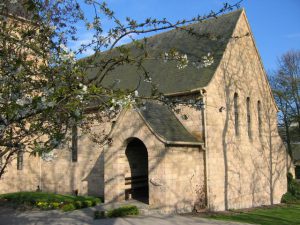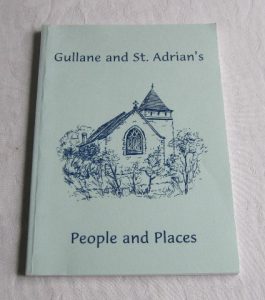Our History
Watched over by big brother, St. Baldred’s in North Berwick, we sprang to life as a Mission to serve the holidaymakers who came to Gullane for golf and the beach. The first services were held on 16th June 1901 in the building now a Golf Museum – early Holy Communion, Matins and Evensong – and continued, with congregations sometimes 90 strong, until the end of September when the visitors went home. The Mission was kept ticking over by St. Baldred’s Rector with an Evensong once a month until June came round and the visitors returned and a galaxy of clergy from all over the U.K. and abroad who happened to be holidaying in the area presided over the services.
Two years later, on Whit Monday, 1st June 1903, St. Adrian’s Church was opened on the Main street, a “Tin Church” constructed of corrugated iron by the Archerfield estate joiner, instructed by Mrs. Hamilton-Ogilvy, landowner and generous benefactor to the village.
 In 1927, after much fund-raising and the intervention of the Great War, the church in Sandy Loan was consecrated, built by local craftsmen in local Rattlebags stone which gleams with crystals from its volcanic origin. The tower was added in 1935 when a member of the congregation donated funds to celebrate the Silver Jubilee of King George V and Queen Mary.
In 1927, after much fund-raising and the intervention of the Great War, the church in Sandy Loan was consecrated, built by local craftsmen in local Rattlebags stone which gleams with crystals from its volcanic origin. The tower was added in 1935 when a member of the congregation donated funds to celebrate the Silver Jubilee of King George V and Queen Mary.
It was in 1908 that the finances of St. Adrian’s had been deemed sound enough to support a priest-in-charge of our own. In 1975, although our own finances continued to be sound, the economic state of the country caused the governing bodies of our Scottish Episcopal Church to aim to reduce paid clergy by 30%. Our Rector retired and he was not replaced. St Adrian’s became a linked charge with St Baldred’s, North Berwick, with a shared Rector and rectory.
 Each linked church retains its independence with its own Vestry to oversee its affairs and St. Adrian’s continues to be served by members of its own congregation elected at the Annual General Meeting.
Each linked church retains its independence with its own Vestry to oversee its affairs and St. Adrian’s continues to be served by members of its own congregation elected at the Annual General Meeting.
A book telling a fuller story of St. Adrian’s history, its people and its place in the village of Gullane is available in the church.
